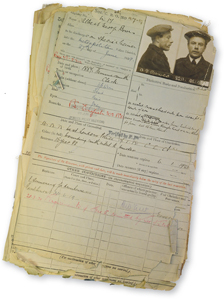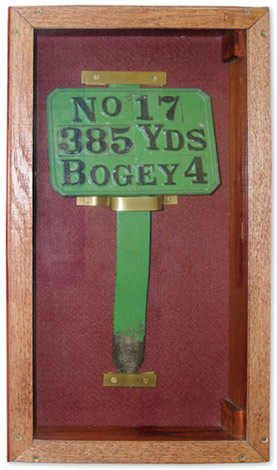
SIR EDWARD HENRY had been commissioner at Scotland Yard since 1903 and had succeeded in revolutionising criminal records by means of his system for classifying fingerprints, but he himself would be the victim of an attempted assassination that would require one of these records.
On the evening of 27 November 1912, Sir Edward Henry arrived back at his Kensington home. As he opened the front door he was approached by 25-year-old Albert George Bowes, who said he wanted to speak to him. Henry replied that he was busy and that the man should call at his office in Scotland Yard, but Bowes pulled out a five-chambered Webley revolver, that is now in the museum, and fired three shots at the commissioner. Henry was wounded in the right groin and leg; the other bullet missed. It transpired that Bowes had been refused a licence to drive a motor omnibus because of a conviction he had received for being drunk and disorderly in March 1912. The Metropolitan Police were responsible for granting these licences and the commissioner would consider appeals against these decisions, but Bowes had become seriously aggrieved at the decision. Henry’s driver, Albert English, seized Bowes and detained him with the help of a nearby porter and a decorator, and was awarded the King’s Police Medal for his bravery.

1912
Criminal record file of Albert Bowes
Albert Bowes was later convicted at the Central Criminal Court for attempted murder. The commissioner, whom William Hartley sketched in court, had a well-developed humanitarian spirit and made a personal plea for mercy on Bowes’ behalf. The judge therefore reduced Bowes’ life sentence to fifteen years’ penal servitude. In 1919 a special remission was granted to Bowes and he was released from prison. Sir Edward Henry paid for his passage to Canada to make a new start, but his new life lasted only until 1924 when Bowes was killed in Florida by a bullet through the head from a sheriff’s pistol after he had shot and wounded a man. Henry was perhaps the only commissioner able to report on an attempted murder on himself in his annual report for 1912.
The family’s relationship with commissioners took a turn for the better when PC Ken Moxley, a grandson of Albert Bowes’ sister, was presented with a community award a century or so later.
In November 1922 another security lapse might have led to the loss of life of another commissioner, Brigadier General Sir William Horwood. After lunch one day he started to sample a box of Walnut Whip chocolates that had been sent to him, thinking that they were a present from his daughter. He immediately felt ill but examined the sweets with a magnifying glass and concluded that they had been poisoned. They turned out to have been laced with weedkiller and several other senior police officers had been sent similar parcels. The investigation led to the arrest of Walter Tatam who was found to be insane and was sent to a mental hospital.

1955
The tee marker bearing the palm print (no longer visible)